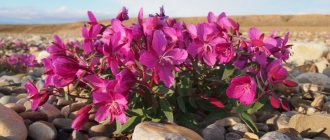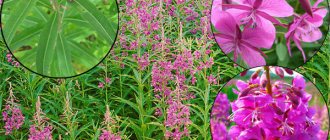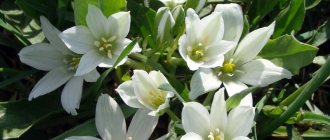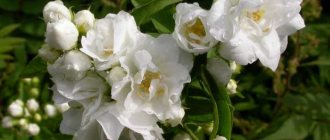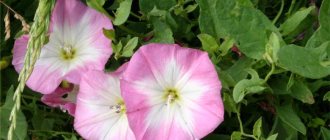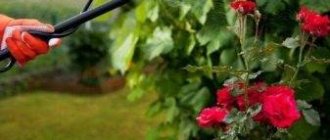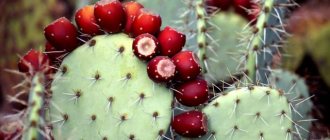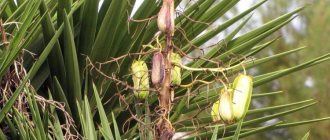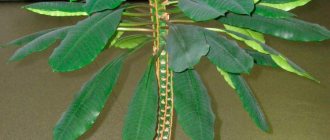Botanical description and photo of the Ivan-da-Marya flower
Mariannik oak grove is classified as a group of pharmacopoeial plants, that is, those with medicinal properties. However, it is not used in official medicine.
The Ivan-da-Marya flower is a semi-parasitic annual with a straight branched stem ranging from 15 to 50 cm in height. Opposite leaves are attached to it, sitting on very short petioles (1-2 mm). The entire plant is covered with short glandular white hairs.
The shape of the leaf blade is ovate-narrow-lanceolate. At the base it is rounded and heart-shaped, and at the end it forms a long point. The leaves are entire, slightly pubescent on top and profusely on the underside. The length of the plates varies from 3 to 10 cm, and the width from 0.5 to 4 cm. Teeth and ears may be present at the base of the leaves.
The semi-parasitic lifestyle of the oak grass is ensured by special suckers that form on the roots and are able to attach to neighboring plants in order to suck out nutrients from them. The hosts of Ivana da Marya can be trees, shrubs and even herbs. The height of its stem depends on who exactly the plant will be adjacent to.
Flowers and fruits
The flowers of the oak grass are collected in a group. By location, the inflorescence is apical and is a one-sided raceme, the length of which reaches 17 cm. The flowers sit on very short (up to 1 mm) pedicels and are surrounded by bracts that have a rich blue-violet color. The corollas themselves are bright yellow, which creates a beautiful contrasting effect.
In the photo, Ivana da Marya flowers look like a long patterned purple pole, hung with solar lights. Such a picture very often attracted the attention of painters and poets. When in the photo the Ivan-da-Marya flower blooms not in a single specimen, but in a group, then the area of the clearing, edge or forest canopy captured on camera looks like a variegated green-yellow-violet carpet.
We recommend reading: Useful properties and contraindications of horsetail
The bracts are smaller in size than the leaves (from 1 to 3 cm in length and up to 1.8 cm in width) and are often located on the stem. The edges of their plates are no longer solid, but comb-toothed.
Flowers of Ivana da Marya are zygomorphic, five-membered, with a two-lipped corolla (formula Ch(5)L(5)T(5)P(2)). At the base there is a cup that forms a 5 mm tube, from the top of which 4 long teeth with strongly pointed ends extend.
The flowering period lasts from May to September, and from June the fruits begin to ripen, which are oblong or elliptical-lanceolate boxes. They contain blackish seeds 5-6 mm long, which fall out as a result of bivalve opening.
The legend of the flower and the goblin
There is a legend associated with the Ivan da Marya flower. It says that once upon a time there lived a goblin in a dense forest. People considered him shaggy, with hooves, big ears, and bowed legs. To which he always replied that his shaggy hair was caused by the tree thorns through which he had to wade. He had no friends, he was not afraid of loneliness, he did not know love, he always fought with his rivals, drove them out of the forest. But one day the goblin fell in love: he saw the violet Marya floating along the stream. He walked next to her, inhaled her scent, looked. He gained the courage to speak about his love. The violet stands there, showing off, and doesn’t even look at the devil, who is upset. In response to this attitude, he foolishly said: “I’m fascinated by you, I can’t see life without you, marry me.” But the violet just looked at him and turned away. The goblin tried to surprise her and boasted. He suggested that she collect all the stars in a hat. But the violet rejected this too, saying that it would be better for the stars to shine from the sky so that the path would be illuminated for her and her husband. Violet told the goblin about her feelings for another, that she loved Ivan and that she would live with him.
When the time came, Maryushka and Ivan got married and lived together as one flower. Since then, neither Maryushka nor Ivanushka were in the forest separately, but only the beautiful flower Ivan da Marya.
Practical significance
Humans use the oak grass as a medicinal plant and an object for pharmacological research. The decorative nature of the Ivan da Marya flower gives it aesthetic value, but it is impossible to use it to create bouquets due to its rapid withering.
The oak grass is poisonous, therefore it can cause poisoning of livestock. Cows that eat this plant suffer from spoiled milk taste. If used carelessly for medicinal purposes, the flower becomes dangerous to humans.
In agriculture, oak grass is good as an insecticide. This plant is also of interest as a honey plant.
The story of Kupala and Kostroma
Another legend talks about fidelity and love. It talks about how on the day of the summer solstice the god Semargl saw the goddess Bathing Suit. They had children: Kostroma and Kupala.
One day, swan geese flew by and stole Kupala and took it to distant lands. Years have passed. One fine day, Kostroma was walking by the river, wearing a wreath on her head. She told her friends that no one would ever be able to tear the wreath from her head. For these words, the gods were angry with her, the wind tore off the wreath and carried it into the river. According to custom, the girl should marry the one who picks up the wreath. At that time, Kupala swam past the wreath and caught the wreath. They got married and only after the wedding the young people found out that they were brother and sister, but they had already fallen in love with each other. In order not to be separated, Kostroma and Kupala decided to drown themselves. The gods had mercy on them and turned them into the Ivan da Marya flower so that they would always be together.
Features of the chemical composition
Many pharmacopoeial, biologically active and toxic substances were found in the composition of the oak grass. First of all, these are flavonoids and phenolcarboxylic acids, among which the following were found:
- coffee shop;
- luteolin;
- ferulic acid;
- cinaroside;
- hyperoside;
- chlorogenic acid.
In total, the plant contains 9 varieties of flavonoids, the total content of which is 0.04-2.3%. Alkaloids and iridoids were found in trace quantities in the oak grove. The seeds contain the glycoside aucubin, which has toxic properties.
Application in medicine
Due to its poisonous nature, the oak grass is not used in official medicine, but in folk medicine this flower has been used for a long time. All components of the above-ground part of the plant are used as medicinal raw materials: stem with leaves, flowers and fruits. Harvesting is carried out during the flowering period by cutting or tearing out the shoot and subsequent drying.
We recommend reading: Beneficial properties of snakeweed and contraindications
Tinctures and decoctions are made from the dry material, which can be used both externally and orally, depending on the purpose of treatment. Due to the presence of toxic substances in the oak grove, care must be taken when taking it internally, as this can lead to poisoning. The latter usually manifests itself in drowsiness, weakness and weakening of cardiac activity.
Collection and preparation of plants
The above-ground part of the plant, which is used as a raw material, should be harvested during active flowering (May - September). It can be cut or pulled out directly with a poorly developed root. Dry in a place away from direct sunlight, which should also be well ventilated. You can store up to 10 months, preferably in paper bags or glass containers. The fruits (pods) can be collected as they ripen from July to September.
White clover: beneficial properties and contraindications
Bedstraw grass - medicinal properties and contraindications
Crescent grass: description and use of the plant
Useful properties of fireweed tea
Blue cornflower - description and use of cornflower flowers
Alocasia flower: beneficial properties and uses of alocasia tincture
Medicinal properties of the Ivan-da-Marya flower
Due to the biologically active substances contained in oak grass, this plant has a whole range of pharmacological properties, including:
- sedative;
- hypotensive;
- insecticidal;
- anti-inflammatory;
- cardiotonic;
- anticonvulsant;
- wound healing.
When taken internally, Ivan-da-Marya has a pronounced effect on the cardiovascular and nervous systems. It has been experimentally established that the tincture of this plant has effects similar to modern tranquilizers. In this case, the calming effect is associated with increased parasympathetic innervation. Thanks to these properties, oak grass is suitable for the treatment of the initial stages of epilepsy.
In folk medicine, tincture of Ivan da Marya has found quite wide application. It is recommended to be used for:
- hypertension;
- heart diseases;
- neurological pathologies;
- problems with the gastrointestinal tract;
- dizziness.
Externally, the tincture is used for various types of skin diseases (scabies, rash, eczema, etc.).
Collection and healing properties of herbs
The entire above-ground part of Ivan da Marya as a medicinal product The collection begins in late spring and ends in September. Initially, the collected material is dried in a well-ventilated area and subsequently stored separately from other herbs. It is also worth remembering that oakberry maryannik very quickly loses its qualities and is suitable for beneficial use during the first ten months.
In medicine, the herb is used as a wound healing and anti-inflammatory agent. The prepared decoction of Ivan da Marya is used for heart and stomach diseases. Adding a medicinal plant to baths helps get rid of rheumatism, eczema and skin tuberculosis.
Effective recipes using the flower:
- A decoction based on oak grass will help get rid of skin rashes, scabies or scrofula. To prepare, dilute 3 tbsp per liter of boiled water. spoons of medicinal herbs. After two hours, the infusion is filtered and added to the bath or used for local rubbing.
- To treat hypertension, heart disease, to get rid of frequent dizziness and epilepsy attacks, the concentration of ingredients changes. In this case, 1 tbsp. l. Ivan da Marya is poured with a glass of boiling water, left for about half an hour and filtered. For effective treatment, drink the decoction twice a day, half a glass.
- The crushed young plant, as well as Ivan da Marya powder, promotes rapid healing of wounds.
Ivan da Marya - indoor flower
There is another plant with the name Ivan-da-Marya - indoor begonia, popularly called the same as oakberry, although in fact these are 2 completely different biological species.
In the photo, the indoor flower Ivan-da-Marya looks like an unusually beautiful graceful plant with two types of corollas: rose-shaped and bud-shaped, which are always formed in pairs. This was the reason for such an original name, since on the territory of Russia plants with different flowers were designated by a phrase consisting of combined male and female names.
Maryannik oak forest was named Ivan da Marya for the same reason. However, in this case, the popular perception of the plant is very different from the scientific one.
Source
Alternative legend
There is a more benign legend with a happy ending.
One day, the young man Ivan and the girl Marya went into the forest to pick mushrooms. They were deeply in love with each other and went everywhere together. When they reached the edge of the forest, a terrible thunderstorm came. Thunder roared so loudly that trees fell, and lightning struck the ground and set the forest on fire. Marya was very scared, dropped the basket of mushrooms, burst into tears and began to collect.
Ivan rushed to help her. Lightning struck very close, striking the ground and trees. Ivan was very scared for Marya and covered her with himself. They sat like that until the storm subsided.
God Perun was out of sorts that day and killed many people walking through the steppe and forest despite the fear that he instilled in them. He killed everyone who was not afraid of thunderstorms with lightning. Noticing a girl and a young man with baskets of mushrooms, he began to send lightning bolts at them. Suddenly he noticed that Ivan was protecting his companion, who was crying and praying to the god Perun for salvation. This greatly touched the formidable ruler of the elements. He stopped sending lightning and thunder.
When Ivan and Marya left, Perun sent one small lightning bolt into the place where they were waiting out the bad weather. The next day, a beautiful plant with golden flowers, like Marya’s hair, grew in this place. And these flowers were covered with purple leaves, like Ivan’s cape. This is how the plant appeared - a symbol of reverent Slavic love.
Flower Ivan da Marya


